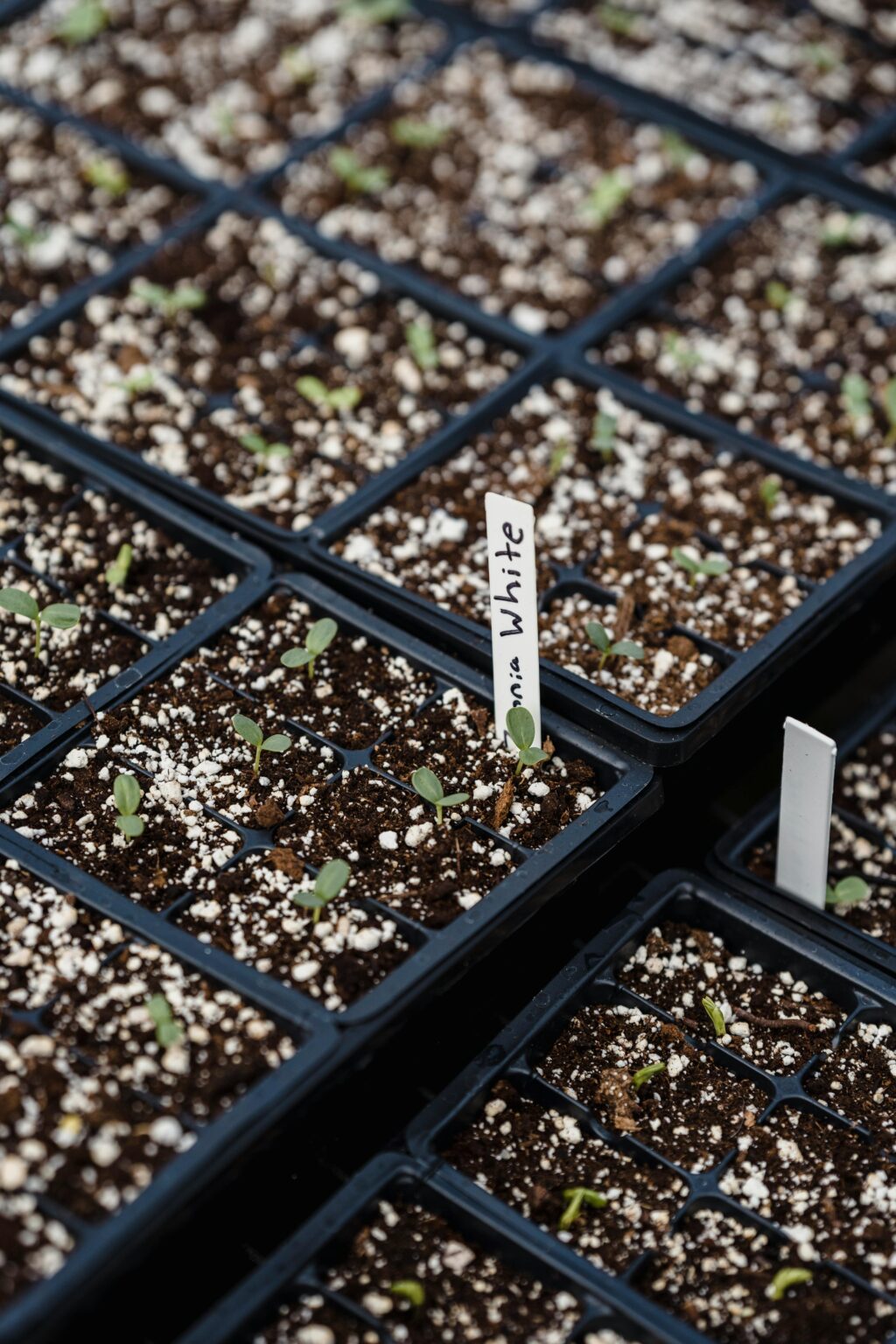Pollinator Party
POLLINATOR PARTY WEEKEND Celebrate the vital role of bees, butterflies, and other pollinators during Pollinator Weekend at Moscarillo’s Garden Shoppe! Whether you’re a seasoned gardener or
Starting seeds indoors is a rewarding way to get a jump on the growing season, especially in Connecticut’s climate, which predominantly falls within USDA hardiness zones 6a to 7a. By beginning seeds indoors, gardeners can ensure robust transplants ready to thrive once the danger of frost has passed.
When to Start Seeds Indoors
Timing is crucial for successful seed starting. In Connecticut, the last expected frost date typically falls between late April and mid-May, depending on your specific location. To determine the optimal planting schedule, count backward from your area’s last frost date using the seed packet’s recommendations. For instance, tomatoes, which require a longer growing season, should be started indoors about 6-8 weeks before the last frost date. Conversely, faster-growing plants like cucumbers may only need 3-4 weeks.
Selecting the Right Seeds
Choose seeds suited to Connecticut’s climate. Cool-season crops such as broccoli, cabbage, and lettuce can be transplanted outdoors earlier, as they tolerate cooler temperatures. Warm-season crops like tomatoes, peppers, and eggplants should be transplanted after the last frost when the soil has warmed sufficiently.
Essential Supplies
To begin seed starting, gather the following materials:

Steps for Successful Seed Starting
Prepare Containers: Clean and sanitize containers to prevent disease. Fill them with moistened seed-starting mix, leaving about half an inch below the rim.
Sow Seeds: Plant seeds at the depth specified on the seed packet. Generally, seeds should be planted at a depth twice their diameter.
Label Plantings: Clearly label each container with the plant variety and sowing date.
Provide Optimal Conditions: Place containers in a warm location, ideally between 65-75°F (18-24°C). Use a heat mat if necessary to maintain consistent warmth.
Light Exposure: Once seedlings emerge, ensure they receive 12-16 hours of light daily. If natural light is insufficient, supplement with fluorescent or LED grow lights.
Watering: Keep the soil consistently moist but not waterlogged. Water from the bottom by placing containers in a tray with water, allowing the mix to absorb moisture.
Thinning: Once seedlings develop their first true leaves, thin them to prevent overcrowding, leaving the strongest plant in each container.
Hardening Off: Before transplanting outdoors, acclimate seedlings to external conditions by gradually exposing them to sunlight, wind, and temperature variations over 7-10 days.
Transplanting to the Garden
After the last frost date and once seedlings are hardened off, transplant them into the garden. Choose a cloudy day or transplant in the evening to reduce transplant shock. Ensure the soil is well-drained and enriched with organic matter to support healthy growth.
By following these guidelines, Connecticut gardeners can successfully start seeds indoors, leading to a productive and enjoyable growing season.
Missed some of our other posts? 💡
catch up on Moscarillo’s posts below
POLLINATOR PARTY WEEKEND Celebrate the vital role of bees, butterflies, and other pollinators during Pollinator Weekend at Moscarillo’s Garden Shoppe! Whether you’re a seasoned gardener or
What to Plant in April and May in Connecticut: A Vegetable Gardener’s Guide Spring is officially in full swing in Connecticut, now is the perfect
Revive Your Spring Planters: The Best Plants for a Stunning Seasonal Display Spring is finally here, and it’s time to bring your outdoor spaces back
How to Start an Herb Garden for Your Home Starting an herb garden is a simple and rewarding way to bring fresh flavors into your
How to Attract Pollinators to Your Garden This Spring Pollinators—like bees, butterflies, and hummingbirds—are essential to a thriving garden. They help plants reproduce, ensuring beautiful
SEED STARTING Starting seeds indoors is a rewarding way to get a jump on the growing season, especially in Connecticut’s climate, which predominantly falls within
